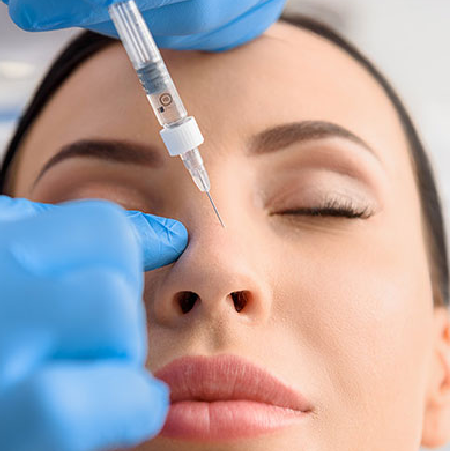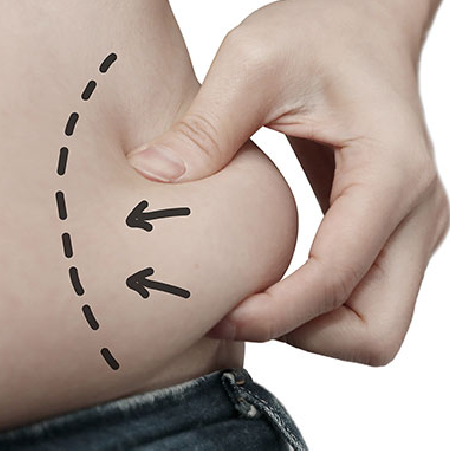How to speed up facelift recovery

While the time it takes to recover from a facelift depends on the individual and the complexity of the operation, there are steps you may do to facilitate quicker recovery and better outcomes. How to speed up the healing process after a facelift:
Follow your surgeon’s post-operative instructions: Care for your incisions and deal with any pain or swelling according to the directions given to you by your surgeon. Careful adherence to these recommendations is critical for achieving optimal recovery and reducing the likelihood of problems.
Keep your head elevated: Elevating your head can aid in the drainage of fluids and the reduction of edema. Your doctor may advise you to keep your head propped up with pillows while you sleep.
Take it easy: Exercise and other vigorous activity should be avoided for many weeks following surgery due to the risk of aggravating swelling and irritating healing scars.
Eat a healthy diet: Support your body’s natural healing processes and speed up your recovery by adhering to a nutritious diet rich in vitamins and nutrients.
Stay hydrated: Keep your skin and tissues moist by drinking plenty of water; this will help flush out toxins and speed healing.
Avoid smoking and alcohol: Both smoking and drinking alcohol can hinder recovery and raise the likelihood of problems. During your time of recuperation, you should refrain from smoking and drinking excessively.
Consider lymphatic drainage massage: Lymphatic drainage massage is an option to consider for certain individuals since it has been shown to decrease swelling and increase lymph flow to the affected areas.
Every patient’s recovery is different, so it’s vital to pay attention to the instructions your surgeon gives you.
Setting up a home recovery area after a facelift
Pick somewhere relaxing and undisturbed: Find a peaceful and cozy corner of your house where you can recuperate in peace. Make sure there is plenty of lighting and air circulation.
Have a comfortable place to sleep: You can minimize swelling by elevating your head as you sleep in a comfortable bed or recliner.
Stock up on supplies: Make sure you have enough pillows, cold packs, and gauze on hand before your procedure. Your doctor may also advise you to get some specialized clothing or bandages.
Create a healing atmosphere: Prepare your environment with therapeutic aids including aromatherapy, soft lighting, and music.
Prepare for meals: As you heal, you may not feel like cooking, so keep some ready-to-heat meals on hand or ask friends and relatives to send you food.
Plan for assistance: You should anticipate needing care, especially in the days following surgery. Make plans to have a loved one either move in with you or visit frequently.
Keep your phone and emergency contacts nearby: Always have your phone and a list of emergency contacts on hand. In case you get hurt and need help or have concerns about your recuperation, have your phone and emergency contacts handy.
It is essential to adhere to your surgeon’s exact recommendations for the best healing, as every patient’s recovery will be different. To get the most out of your facelift, you should set up a pleasant and secure recuperation room at home.
How long is recovery from a facelift?
The time it takes to recover from a facelift depends on the complexity of the surgery and the individual patient. However, the following is a typical recuperation schedule for people after a facelift:
Immediately after surgery: After your procedure, you’ll be brought to a recovery area where you’ll be attentively supervised while you come out of anesthesia. The drowsiness and nausea you’re feeling should go away after a few hours.
First few days: During the first few days after surgery, you may most likely feel some discomfort, swelling, and bruising. Your doctor will advise you on how to take care of your incisions and prescribe pain medication.
First week: After the first week, most patients are ready to return to light activities, but it’s still necessary to be careful not to irritate their healing incisions. There may be some residual swelling and bruising, but it should be diminishing now.
Second week: By the second week, most patients should be feeling considerably better, and the initial swelling and bruising should have faded. It is crucial, however, that you continue to adhere strictly to your surgeon’s post-operative recommendations throughout this period.
First month: Generally speaking, most patients will be able to return to their pre-surgery routines by the end of the first month. However, it is still crucial to avoid any activities that could put stress on your healing incisions.
Three to six months: The outcomes of the treatment may not be seen for three to six months, as swelling and bruises fade and tissues settle into their new position.
Remember that your recovery will be different from other patients and that it is essential to adhere to your surgeon’s instructions for the best possible outcome.

One week after a facelift
Swelling, bruising, and soreness in the treated regions are all to be expected in the week following a facelift surgery in Iran. Although the degree to which an individual experiences relief from these symptoms depends on factors such as preexisting conditions and the complexity of the treatment, most patients can anticipate at least some improvement by this time.
- You must adhere strictly to your surgeon’s post-facelift guidelines throughout the first week.
- Maintaining a straight posture: For the first week following surgery, it is recommended that you rest with your head elevated to minimize swelling and speed recovery.
- Taking prescribed doses of pain medication: In the days following surgery, your doctor may advise you to take pain medication. If you want to feel well, take this medication exactly as prescribed.
- Resting instead of working out: In the first week following surgery, you should rest and allow your incisions to heal without engaging in any vigorous activities or exercise.
- Maintaining a sterile operating environment: During the first week following surgery, your surgeon will give you detailed instructions on how to properly care for your incisions, including keeping them clean and dry.
- Drinking enough water can aid in healing by flushing out toxins and keeping skin and tissues moisturized.
- Your surgeon will want to check in with you after a week to see how you’re doing and make sure everything is healing normally. You should expect your face to continue to improve over the next few weeks and months, although you may still be dealing with some swelling and bruising.
Two weeks after a facelift
The majority of the swelling and bruising associated with a facelift should have disappeared by two weeks after the procedure. It is crucial, however, that you continue to adhere strictly to your surgeon’s post-operative recommendations throughout this period. Considerations at the two-week post-facelift mark include the following:
Bruising and swelling: There may be some remaining swelling or bruising in the treated locations, but it should be much less noticeable now. This is very normal and may go away after a few weeks.
Incisions: Your incisions should be healing nicely now, although you may still be able to see them. Keep your incisions clean and dry, and refrain from doing anything that could cause strain on them, as directed by your surgeon.
physical activity: Avoid any strenuous physical activity or exercise that could place stress on your healing incisions until your doctor gives you the green light.
Appointment to follow up: At the two-week mark, your surgeon will want to check in with you to make sure you’re doing well and mending as expected.
Although you may notice a change in your facial appearance as early as the two-week mark, the final results may not be fully visible until several months have passed. If you want the best possible recovery and long-term results, be patient and do as your surgeon tells you to.
Remember that your recovery will be different from other patients and that it is essential to adhere to your surgeon’s instructions for the best possible outcome.
How painful is facelift recovery?
Recovery following a facelift can be painful, but how much so depends on the individual and the amount of the surgery. In the days immediately following surgery, patients typically feel some level of pain, edema, and bruising.
Pain, soreness, and swelling are all possible side effects of a facelift in the days following the procedure. Taking prescribed pain medication and adhering to your surgeon’s postoperative care recommendations will help you cope with this. Facial numbness and tingling are other possible side effects, however, they may be transitory.
Patients typically report that the majority of their facelift healing pain and discomfort fade within the first week. However, as the swelling and bruises fade away for weeks or months, the procedure’s final results will become obvious.
Get lots of rest, avoid heavy exercise, and elevate the treated area as much as possible to reduce discomfort and swelling as directed by your surgeon in the days following surgery. The use of cold compresses or other pain relief methods may also be suggested by your surgeon.
FAQ
When can I go back to work after a facelift?
Time off from work following a facelift often depends on the length of the operation as well as the patient’s healing process. The following are standard tips for patients to follow when returning to work following a facelift:
Patients should take at least a week off work the first week to rest and let their bodies start the mending process. Two weeks after surgery, most patients can go back to work, though they may still have some swelling and bruises. By the third week, most patients should be feeling considerably better, and the initial swelling and bruising should have faded. By the end of the first month, most patients are cleared to return to routine activities, including employment. However, you should still avoid doing anything that could put stress on your healing incisions during this fourth week.
The time it takes to get back to work varies greatly from one occupation to the next. If your profession involves heavy lifting or strenuous physical activity, you may need to take time off or adjust your responsibilities for a while. When it comes down to it, the best way to recover from surgery is to take your time resting and recovering as directed by your doctor.
What can I expect on the day of my facelift surgery?
Your surgeon will give you detailed pre-operative instructions to follow on the day of your facelift procedure. On the day of your facelift procedure, you might expect the following:
The first thing you’ll do when you get to the hospital is check in at the front desk. In addition to reviewing your medical history and current prescriptions, you may be required to fill out some paperwork.
You’ll put on a hospital gown and talk to your surgeon and anesthesiologist in the pre-op room before the procedure begins. You’ll get the lowdown on your upcoming operation, have any questions answered, and get any pre-op drugs you need.
You will be given an anesthetic before being brought to the operating room. Your doctor will consult with you in advance to determine the best course of action regarding anesthetic.
The facelift surgery will begin while you are under general anesthesia. The method employed and the scope of the operation will determine the particulars of the procedure. It usually takes a few hours to complete the process.
Following surgery, you will be transferred to a recovery area where your awakening from the anesthetic will be closely monitored. Your surgeon will give you detailed postoperative instructions and provide pain medication as needed.
Discharge: You will be able to go home with an adult caregiver once you have fully recovered from anesthesia and your surgeon gives you the all-clear. For the initial 24 hours following surgery, having a companion is highly recommended.
The success and safety of your surgery depend on your meticulous adherence to your surgeon’s preoperative instructions. In the days preceding surgery, patients are often instructed to abstain from smoking and consuming alcohol, as well as to avoid taking certain medications or consuming particular foods.












